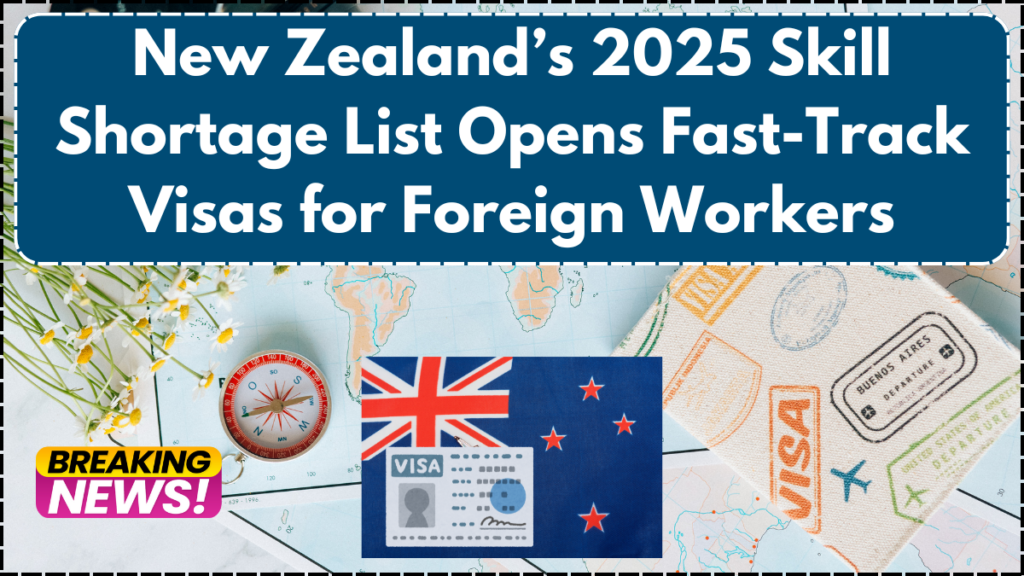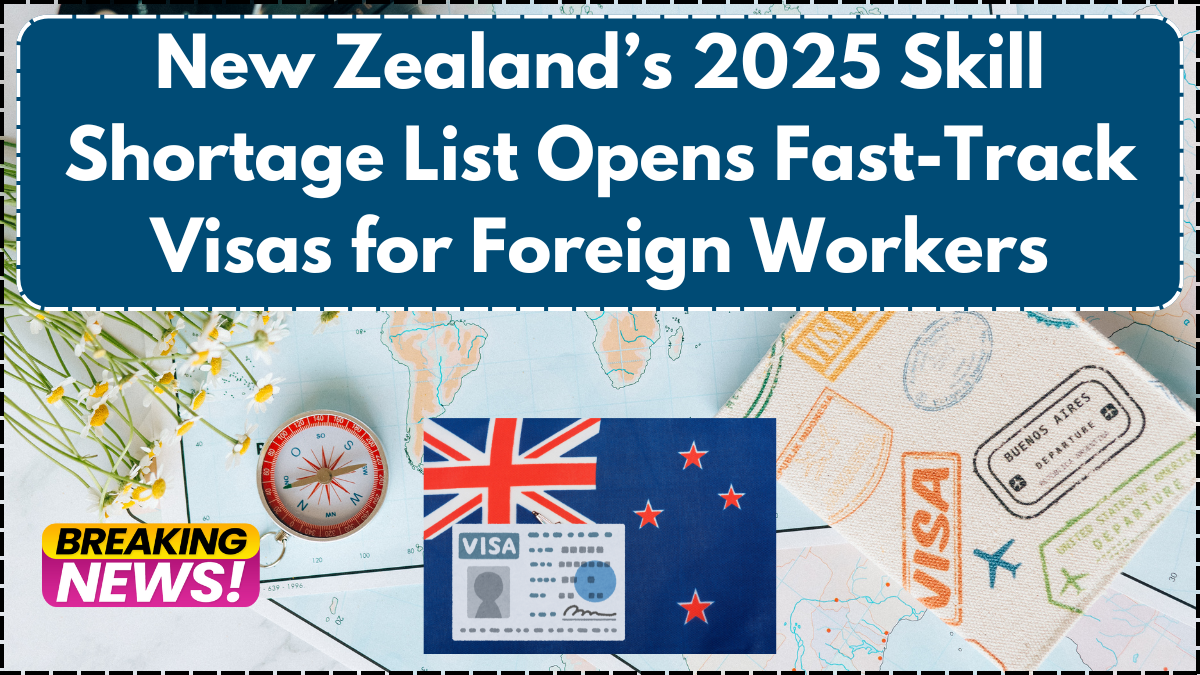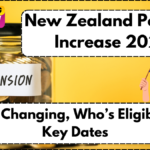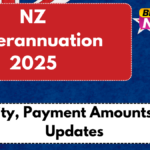In April 2025, New Zealand unveiled a significant update to its Scarce Skill Shortage Lists, signaling a proactive strategy to attract top-tier talent from around the world. This major policy shift opens new pathways for skilled professionals across key sectors, including healthcare, technology, education, and agriculture. The move aligns with the government’s long-term labor strategy, making it easier for foreign professionals to live and work in New Zealand.

Understanding the Scarce Skill Shortage Lists
New Zealand uses the Scarce Skill Shortage Lists as a targeted immigration tool. These lists identify occupations in critical demand, allowing qualified overseas professionals to access streamlined visa pathways. With the 2025 update, these lists are more expansive and inclusive, reflecting current labor market demands.
Professionals whose roles appear on these lists may now qualify for:
- Accredited Employer Work Visa (AEWV)
- Green List Residence Visa
- Work to Residence Visa
- Straight to Residence Pathway
This initiative prioritizes high-need sectors, fast-tracking immigration for qualified candidates.
Key 2025 Updates: What’s Changed?
The 2025 revision is more than an annual adjustment—it’s a comprehensive upgrade aimed at filling long-standing gaps in the workforce. The update streamlines processes for in-demand roles, reducing bureaucracy and wait times.
Here are some major highlights by sector:
Long-Term Skill Shortage List (LTSSL): Top-Tier Visa Access
Roles on the LTSSL receive priority processing and are eligible for multiple visa options. Key sectors and in-demand roles include:
Information and Communication Technology (ICT)
- Cybersecurity analysts
- Full-stack and software developers
- Systems and database administrators
- ICT project managers and business analysts
Engineering and Skilled Trades
- Civil, structural, and electrical engineers
- Diesel mechanics and quantity surveyors
- Construction site supervisors and project managers
Healthcare and Medical Services
- General practitioners (GPs)
- Psychiatrists, nurses, and medical technicians
- Radiographers and physiotherapists
Telecommunications
- Network engineers and systems architects
Professionals in these fields can often bypass traditional immigration hurdles through the Straight to Residence Visa route.
Healthcare & Community Support: A Critical Priority
New Zealand is facing growing demand in healthcare and aged care services. The updated Personal Carers & Critical Health Workers list targets support roles essential to national wellbeing.
In-demand healthcare support roles include:
- Personal care assistants and aged care workers
- Emergency medical staff including paramedics
- Support roles in mental health and addiction care
- Medical lab workers in oncology and pathology
These occupations not only offer job security but also provide access to accelerated residency pathways.
Primary Sector Shortages: Agriculture, Food & Fisheries
New Zealand’s economy is heavily reliant on its primary industries. With labor shortages affecting farms, fisheries, and food processing, the country is looking abroad to fill these roles.
Key primary sector roles in demand:
- Dairy and livestock farmers
- Butchers, bakers, and meat processors
- Aquaculture and marine farm specialists
- Agricultural engineers and technicians
- Seasonal pickers for vineyards and mushroom farms
These jobs often come with the added benefit of working in some of New Zealand’s most scenic rural locations.
Occupations Requiring Registration: Credentialed Experts in High Demand
Certain skilled roles require registration with New Zealand’s professional bodies. For those who qualify, this opens the door to immediate visa opportunities.
Professionals eligible under this category include:
- Teachers (ECE, primary, and secondary)
- Pharmacists, physiotherapists, and midwives
- Occupational therapists and dietitians
- Dentists, chiropractors, and lab scientists
If you meet the registration criteria, your chances of fast-track immigration significantly improve.
How to Take the Next Step
If your profession appears on the updated lists, here’s how to proceed:
- Secure a job offer from a New Zealand Accredited Employer.
- Apply for an appropriate visa based on your occupation.
- Begin your journey toward permanent residency.
- Bring your spouse or dependents on family visas.
Always check the official immigration site for the latest eligibility details.
Fast-Track Visa Options: At a Glance
| Visa Type | Who It’s For | Key Benefits |
|---|---|---|
| Accredited Employer Work Visa | Skilled workers with a valid job offer | Quick processing, work rights, family inclusion |
| Green List Residence Visa | Occupations in critical shortage | Pathway to residency with job in hand |
| Work to Residence Visa | For those aiming for PR after working in NZ | Long-term option for committed professionals |
| Straight to Residence Visa | High-priority roles on LTSSL | Immediate eligibility for permanent residence |
Conclusion
New Zealand’s April 2025 Scarce Skill Shortage List update is a timely response to both global talent trends and domestic labor needs. By widening the scope of eligible professions and simplifying immigration pathways, New Zealand is setting the stage for a more dynamic, skilled, and sustainable workforce. For skilled professionals around the world, this is a golden opportunity to build a future in one of the world’s most livable countries.
FAQs
What is the Scarce Skill Shortage List?
The Scarce Skill Shortage List identifies occupations where New Zealand faces a lack of qualified workers. It helps streamline the visa process for eligible foreign professionals.
How can I qualify for a visa under the updated list?
You need to secure a job with an Accredited Employer and apply under one of the appropriate visa categories. Your occupation must be listed on the updated Scarce Skill Shortage Lists.
Do I need professional registration to apply?
If your role requires registration in New Zealand (e.g., teachers, nurses, pharmacists), you must be registered with the relevant professional body.
Can my family move with me?
Yes. Most of these visa pathways allow you to bring your spouse and dependent children.
Is there a deadline for applications?
There is no fixed deadline, but policies may evolve. Applying sooner ensures you benefit from current rules.
For More Information Click Here
Pari is a passionate writer known for captivating stories that blend imagination and reality. Inspired by travel, history, and everyday moments, Pari crafts narratives that resonate deeply with readers.




